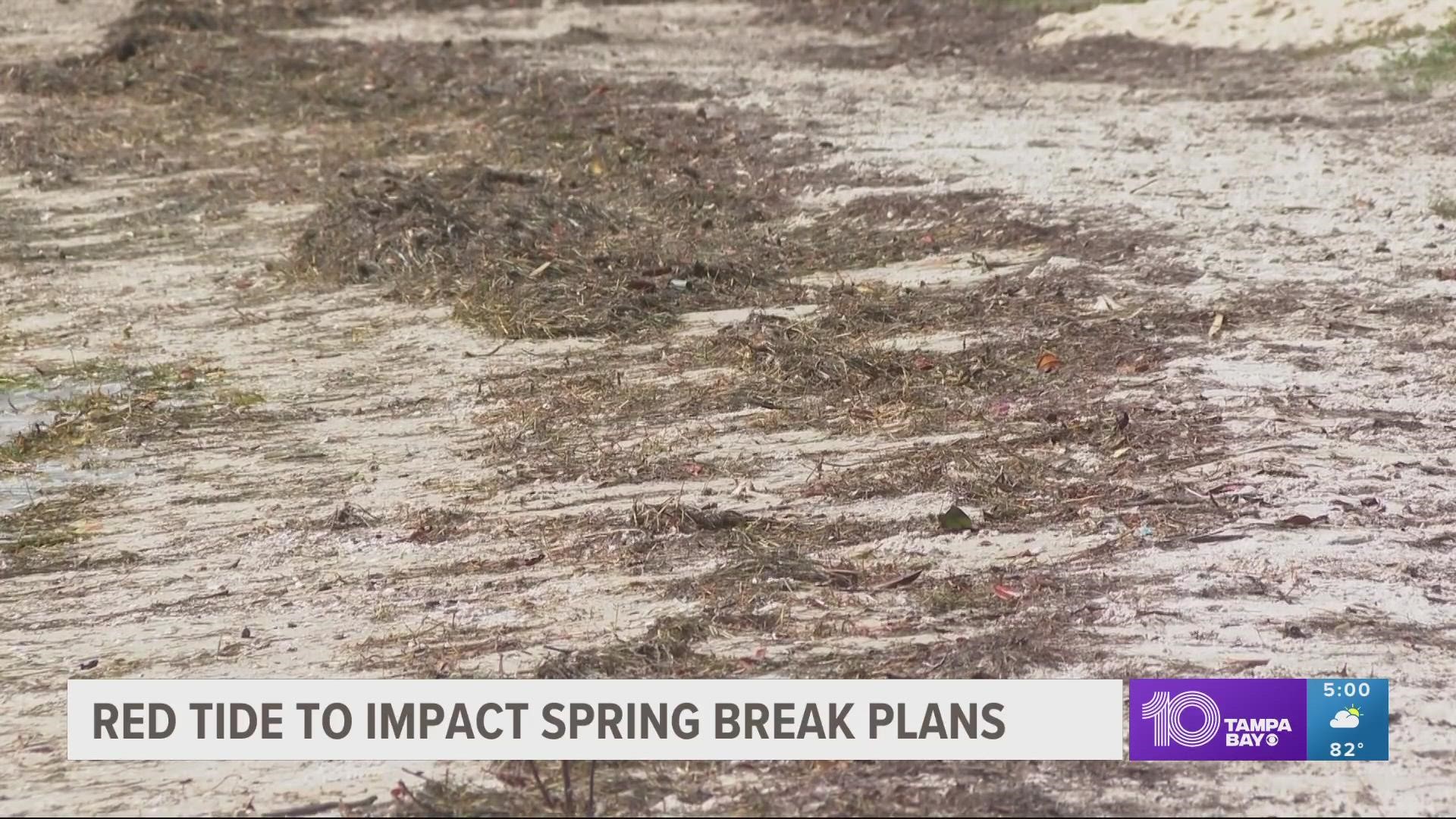ST. PETE BEACH, Fla. — With spring breakers ready to enjoy Florida's white, sandy beaches, something foul is causing discomfort for native Floridians and visitors alike — red tide.
Experts say the latest bloom of red tide is "unusual" for this time of year — a time spent usually soaking up the sun and making memories, not spent coughing from respiratory irritation or avoiding dead fish.
But unfortunately, Karenia brevis, aka the red tide organism, is here along much of the Tampa Bay area's coast, and some areas are seeing high concentrations.
Here's where the Florida Fish and Wildlife Conservation Commission says red tide is present as of Tuesday, March 14:
- Pinellas County — background to high concentrations
- Manatee County — low to high concentrations
- Sarasota County — background to high concentrations
Fish kills are also being reported across the Tampa Bay area, in Pinellas, Manatee and Sarasota counties. Respiratory irritation believed to be related to red tide has also been reported in those three counties.
But this doesn't mean you can't go and enjoy yourself at the beach. You just need the tools to help you plan and track current and even near-future beach conditions. Which we happen to have right here.
The National Centers for Coastal Ocean Science (NCCOS) releases forecasts of harmful algal blooms across the Gulf of Mexico.
For example, on March 6, when this story was published, some Tampa Bay area beaches in Manatee, Pinellas and Sarasota counties may have had a moderate to high risk of respiratory irritation from red tide. Those conditions were forecast to linger for the next 36 hours.
The forecast doesn't mean the conditions will be present the whole time, but people will likely feel respiratory irritation when winds are blowing onshore at the beaches where red tide is most prevalent.
The map below, made by the Gulf of Mexico Coastal Ocean Observing System (GCOOS) shows a daily forecast for respiratory issues caused by red tide. You can also see the map here.
The map allows you to interact with each beach where red tide has been detected and shows you a detailed forecast of that particular beach's risk of red tide, the wind speed and which direction the wind is blowing.
Mote Marine Laboratory also has a beach conditions reporting system. You can get the latest information here.

